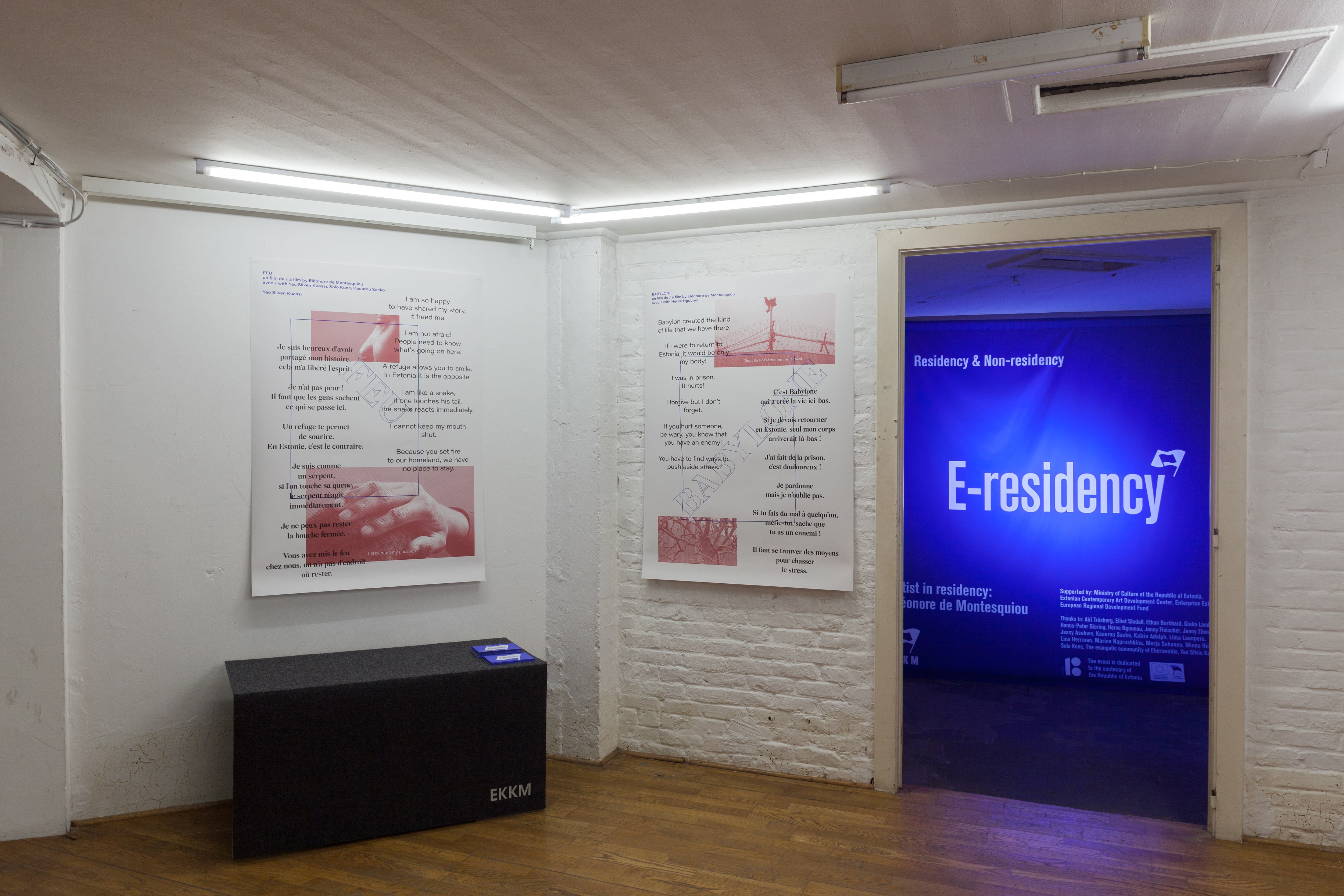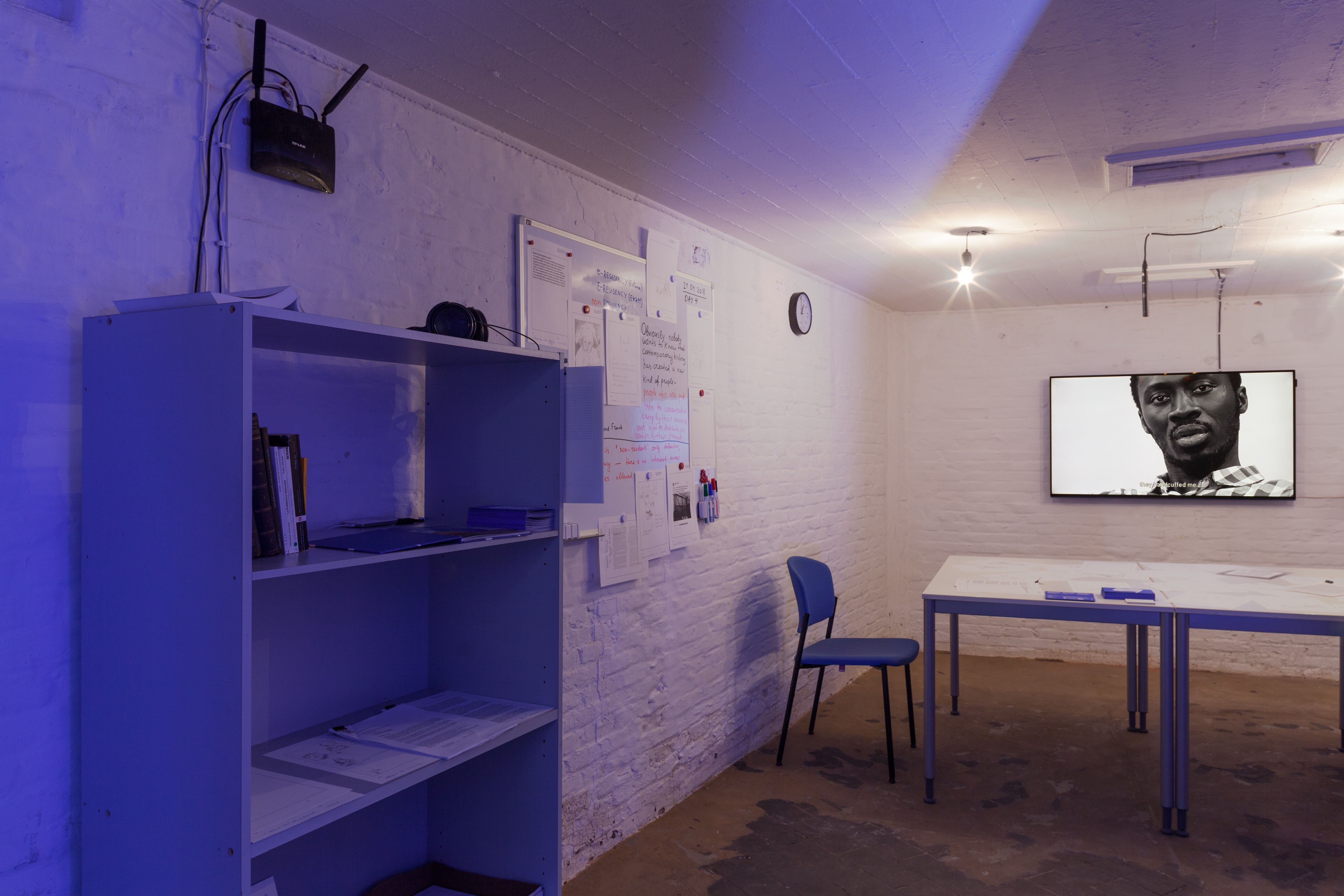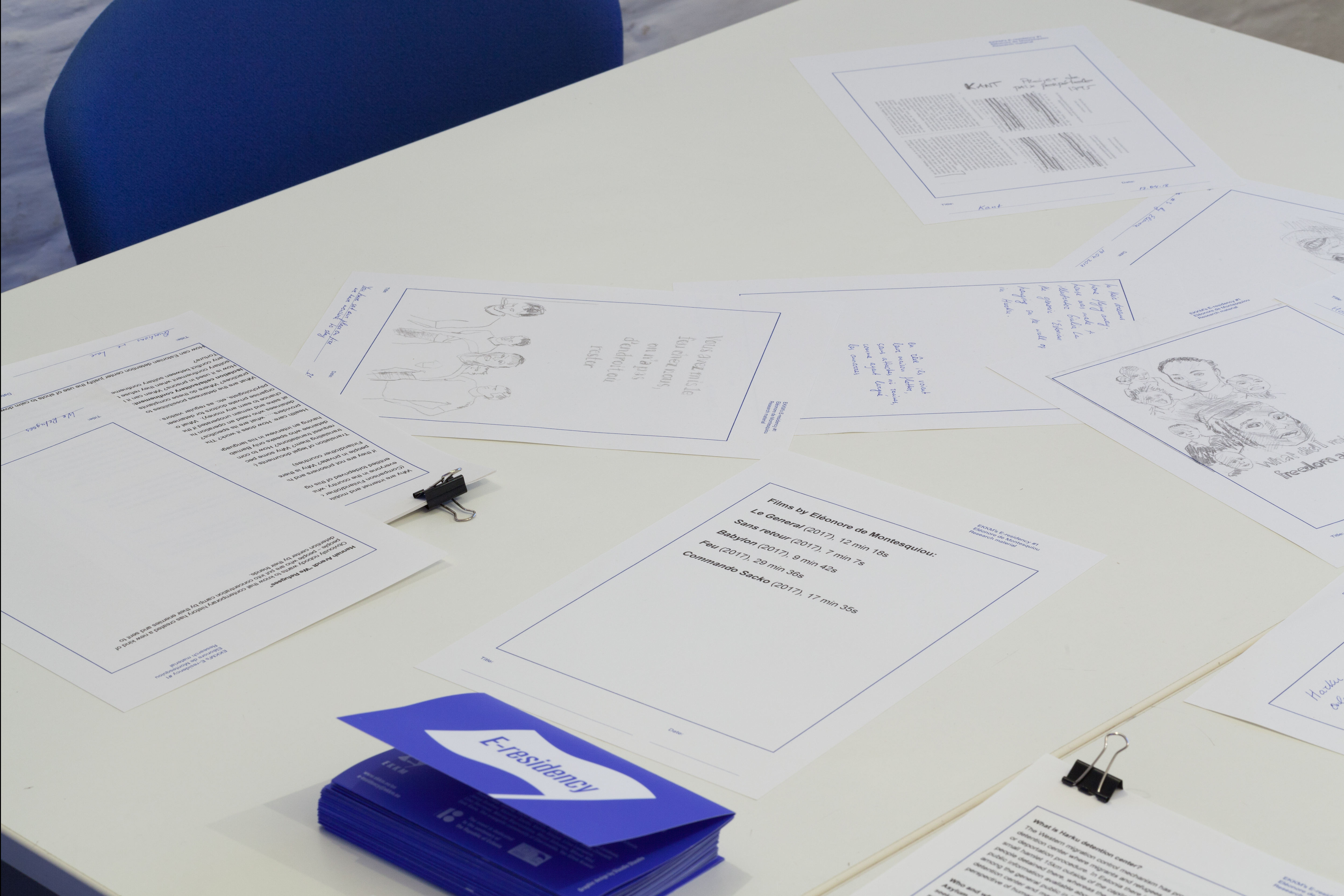Artist
EKKM’s E-residency #1: Residency & Non-residency is an infrastructural project by the Contemporary Art Museum of Estonia (EKKM) in collaboration with French-Estonian artist Eléonore de Montesquiou for POPPOSITIONS off-fair 2018, In Watermelon Sugar.
Being an already established national buzzword, “e-Residency” as a governmental project has become to symbolise Estonia’s aim in creating a “new digital nation”, by providing digital citizenship and access to its digital services for all interested parties. As the slogan goes: “E-Residency is a new digital nation for global citizens, powered by the Republic of Estonia.” As the e-Residency is not legally a citizenship, a digital nation of non-residents is in the making.
EKKM’s E-residency plays on this twofold notion of residency by creating a digital artist residency and inviting an artist for an intensive 5-day digital commitment. Being also conceived as a performative project, the E-residency unfolds as a working relationship between the institution and the artist during the opening hours of POPPOSITIONS. The content of this project does not only rely on the artist and the works presented, but also on the (infra)structure provided for, as well as the content generated during the residency. On display, as far as this word can be used, are not only works but also the work.
The setting of the residency format is edition-specific, with the #1 deriving from the films of de Montesquiou and being based on the conjugal space of Harku Detention Centre, the only immigration detention centre in Estonia. The content of the residency evolves around the conditions of the detainees (violations of human rights, denied Internet access and essential privacy, etc), while juxtaposing it with the framework of the national e-Residency programme, i.e. contrasting the situations of both of these de jure non-residents.
What happens when and while we lose or put aside our physicality?
What happens when physicality is all that remains?
In what way (if at all) is the host accountable for its non-residents and how drastically can it differ within one “nation”?
Does the suggested format of EKKM’s E-residency differ in any way from the already established precarious as well as mobile working conditions of artists and what might be the importance of physical presence after all?
During the fair’s visiting hours one can also see the traces of Eléonore de Montesquiou’s immaterial residency here.
Supported by: Ministry of Culture of the Republic of Estonia, Estonian Contemporary Art Development Center, Enterprise Estonia, European Regional Development Fund, Estonia 100
Thanks to: Airi Triisberg, Elliot Sindall, Ethan Burkhard, Giulia Landonio, Hanns-Peter Giering, Herve Ngounou, Jenny Fleischer, Jenny Zinovieff, Jessy Asukwa, Kaourou Sacko, Katrin Adolph, Liina Laanpere, Lina Herrman, Marina Naprushkina, Merja Suhonen, Minna Hint, Solo Kone, The evangelic community of Eberswalde, Yao Silvio Kuassi
More info:










